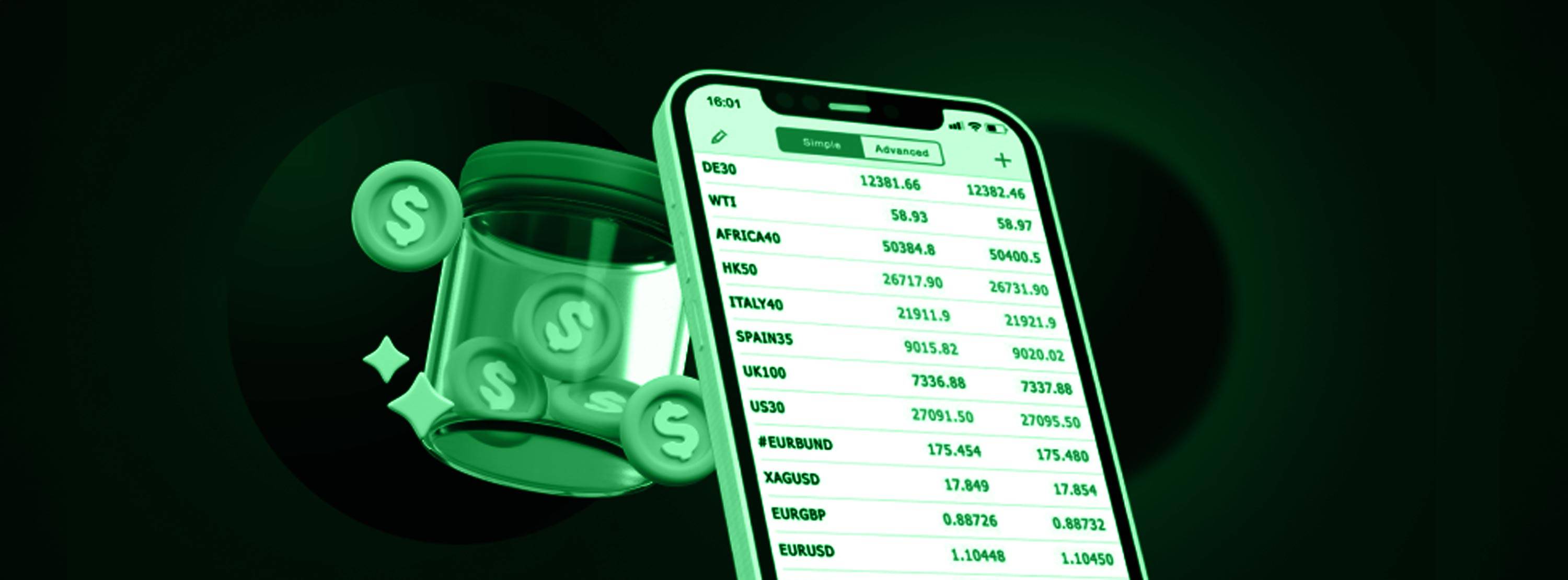
Introduction:
Currency correlations in forex trading refer to the statistical relationships between different currency pairs. Understanding these correlations can help traders manage risk, confirm trading signals, avoid redundant trades, and employ effective hedging strategies. Here are four dimensions to think effectively about currency correlations:
1. Risk Management: Currency correlations can be used for diversification. If you’re trading multiple pairs, you should aim for a mix of pairs that are not positively correlated to each other to avoid doubling your risk. For example, if you’re trading EUR/USD and GBP/USD, which are positively correlated, you’re essentially doubling your exposure to the same risk.
2. Trading Signals: Currency correlations can also be used to confirm entry or exit signals. For instance, if you get a buy signal for the EUR/USD and the GBP/USD (which are positively correlated) is also in an uptrend, it can be a confirmation of your entry. This can also be applied to negatively correlated pairs.
3. Hedging Strategies: Hedging with forex is a strategy used to protect one’s position in a currency pair from an adverse move. One approach is to place a hedge by taking the opposite position in the same currency pair. Another approach is to use highly positively or negatively correlated currency pairs. For example, opening long EUR/USD and short EUR/JPY positions simultaneously, since those two pairs are highly correlated, the loss in one case can be offset by the gains made from the second trade.
4. Economic Ties Between Currency Pairs: Correlations between the world’s most heavily traded commodities and currency pairs are common. For example, the Canadian dollar (CAD) is correlated to oil prices due to exporting, while Japan is susceptible to oil prices because it imports most of its oil. Similarly, Australia (AUD) and New Zealand (NZD) have a close relationship to gold prices and oil prices. Understanding these economic ties can help traders anticipate movements in currency pairs and commodities.
Usefulness of Correlations to Risk Management
Currency correlation in forex trading is the statistical measure that shows how two currency pairs will move when compared to each other. Correlation is rated between -1 and 1. A correlation of 1, which is also known as perfect positive correlation, means that two currency pairs will move in the same direction all the time. On the other hand, a correlation of –1, or a perfect negative correlation, indicates that the two pairs will move opposite directions 100% of the time.
For example, the EUR/USD and GBP/USD pairs exhibit a good correlation that could be in the range of 0.81 to 0.95. In this case if the EUR/USD pair rises, the GBP/USD pair is also likely to rise while on the flip side. This correlation exists because of the fact that both the euro and the pound are linked to the U.S. Dollar and that both the euro and the pound are strong economically.
These are the correlations that you need to be aware of when trading several pairs and, therefore, to manage your risk properly. Having a long position in the EUR/USD and GBP/USD pairs is as good as doubling your exposure to the same risk. Thus, if the US dollar strengthens, then the EUR/USD and the GBP/USD will decrease in value leading to losses on both trades.
This is why it is recommended to diversify your trades among uncorrelated currency pairs. Such is the case of EUR/USD and USD/CHF pairs which have a negative correlation coefficient of about ninety nine percent. When the EUR/USD pair rises, the USD/CHF pair decreases, and the reverse is true. By exchanging these two lots, you may mitigate your risks. If one trade fails, the other succeeds, and you can compensate for your possible loss.
However, it’s important to note that correlations do not always remain stable. They can change due to various factors, such as changes in economic conditions or market sentiment. Therefore, it’s crucial to stay updated with current currency correlations and adjust your trading strategy accordingly.
In conclusion, understanding and utilizing currency correlations can be a powerful tool for risk management in forex trading. By diversifying your trades among pairs that are not positively correlated, you can potentially avoid doubling your risk and increase your chances of successful trading.
Trading Signals and Correlations
Trading Signals: To validate exit or entry signals, forex traders can use currency correlations. For instance, a buy signal for the EUR/USD pair and the GBP/USD pair is positively correlated, which can support your entry. This principle can also be applied to negatively correlated pairs .
Therefore, when trading correlated currency pairs, one must take into consideration the price movements and correlations. When two pairs have a strong positive correlation, they often trend together. However, if two variables are strongly negatively, they will tend to move in opposite directions.
To use currency correlations for trading signals, you can follow these steps:
1. Identify correlated currency pairs: Determine which currency pairs exhibit a strong positive or negative correlation. You can check this information on a currency correlation table, or a correlation indicator on your trading platform.
2. Monitor price movements: Pay attention to the changes of the related pairs. Look at the other correlated pair to confirm if it is moving up (for positive correlation) or down (for negative correlation) with one pair that is showing strong trend.
3. Confirm entry or exit signals: A confirmation for your entry or exit signals can be provided by both correlated pairs moving in the direction suggested by their correlation. For instance, if you receive a buy signal for the EUR/USD pair and the GBP/USD pair (positively correlated) is also in an uptrend, it can confirm your entry. In a similar manner, if your sell signal for the EUR/USD pair and the USD/CHF pair is positive, it can validate your entry.
Hedging and Correlations
Hedging in forex is a strategy used to protect one’s position in a currency pair from an adverse move. It is typically a form of short-term protection when a trader is concerned about news or an event triggering volatility in currency markets.
One approach to hedging is to place a hedge by taking the opposite position in the same currency pair. This strategy is referred to as a “perfect hedge” because it eliminates all of the risk (and therefore all of the potential profit) associated with the trade while the hedge is active[1]. For instance, if a trader holds a long position on EUR/USD, they would short the same amount of EUR/USD to hedge their position.
Another approach to hedging involves using highly positively or negatively correlated currency pairs. In forex markets, correlation is used to predict which currency pair rates are likely to move in tandem. A positive correlation means that the values of two variables move in the same direction, a negative correlation means they move in opposite directions. For example, if a trader opens long EUR/USD and short EUR/JPY positions simultaneously, since those two pairs are highly correlated, the loss in one case can be offset by the gains made from the second trade. This is because if the EUR/USD position suffers a loss, the EUR/JPY position is likely to generate a profit, thus offsetting the loss.
However, it’s important to note that while hedging can protect against losses, it also limits potential profits. For instance, in the case of a perfect hedge, while the risk is eliminated, the potential for profit is also nullified as any gain in one position is offset by a loss in the other. Similarly, in the case of hedging with correlated pairs, while losses in one position can be offset by gains in another, the reverse is also true – gains in one position can be offset by losses in another.
Moreover, hedging strategies are often used by more advanced traders, as they require fairly in-depth knowledge of financial markets. It’s important to understand the forex market and create a trading plan before starting to hedge forex.
Economic Ties Between Currency Pairs Correlations
The relationship between currencies and commodities is a major factor in the global financial market. These correlations are visible on the world’s most liquid commodities and currency pairings. For example, the Canadian dollar (CAD) has a correlation with oil prices because Canada exports a lot of oil. Most of the time, when the oil price increases, the CAD strengthens, while it wears in case of a fall in oil prices.
Japan as one of the oil’s importers will also have vulnerabilities to the oil prices. An increase in oil prices may cause the JPY to weaken as imports become more expensive.
Australian dollar and the New Zealand dollar (AUD and NZD) are also significantly related to gold and oil prices. Australia and New Zealand are also among the major trading countries, with their currencies linked to the commodity prices. During the time when the gold or oil prices rise, AUD and NZD tend to appreciate.
Understanding these economic ties can also guide traders on how to predict fluctuations in currency pairs and commodities. For illustration, a trader understands that CAD is positively correlated with oil prices. They may end up purchasing the CAD when the oil prices increase. Secondly, the investors can buy the AUD and NZD if they realize that they are positively correlated with the gold prices .
Still, it is essential to mention that these correlations may vary in the course of time and they may not be constant all the time. Commodity prices determine or are affected by the currencies of the commodity-dependent countries and the factors that influence this include supply and demand, geopolitical events and changes in economic policies. Hence, traders have to pay attention to these correlations and make trading decisions accordingly.
Moreover, these correlations can also provide insights into the broader economic conditions of the countries involved. For example, a strong correlation between a country’s currency and a particular commodity could indicate that the country’s economy is heavily dependent on that commodity. This information can be useful for traders and investors when making decisions about their portfolios.
In conclusion, understanding the economic ties between currency pairs and commodities can be a valuable tool for traders. It can help them anticipate market movements, make informed trading decisions, and gain insights into the economic conditions of different countries. However, it’s crucial to remember that these correlations can change and should not be solely relied upon for making trading decisions.
Conclusion
In conclusion, understanding and effectively utilizing currency correlations is a key strategy in forex trading. It assists in risk management by allowing traders to diversify their portfolio with uncorrelated or inversely correlated pairs, thus preventing the doubling of exposure to the same risk. In terms of trading signals, correlations serve as a tool for confirming entry and exit signals, as positively correlated pairs tend to move in tandem while negatively correlated pairs move in opposite directions. For hedging strategies, traders can use correlated pairs to protect against adverse moves by either employing a perfect hedge within the same pair or using positively or negatively correlated pairs to offset potential losses. Furthermore, comprehending the economic ties between currency pairs and commodities, such as the correlation of the Canadian dollar with oil prices or the Australian and New Zealand dollars with gold, provides valuable insights into market dynamics and helps predict fluctuations. However, it’s crucial to remember that these correlations are not static and can change due to various economic and geopolitical factors. Therefore, staying informed and flexible in strategy is essential for successful forex trading.
Disclaimer: This is not an Investment Advice. Investing and trading in currencies involve inherent risks. It’s essential to conduct thorough research and consider your risk tolerance before engaging in any financial activities.


